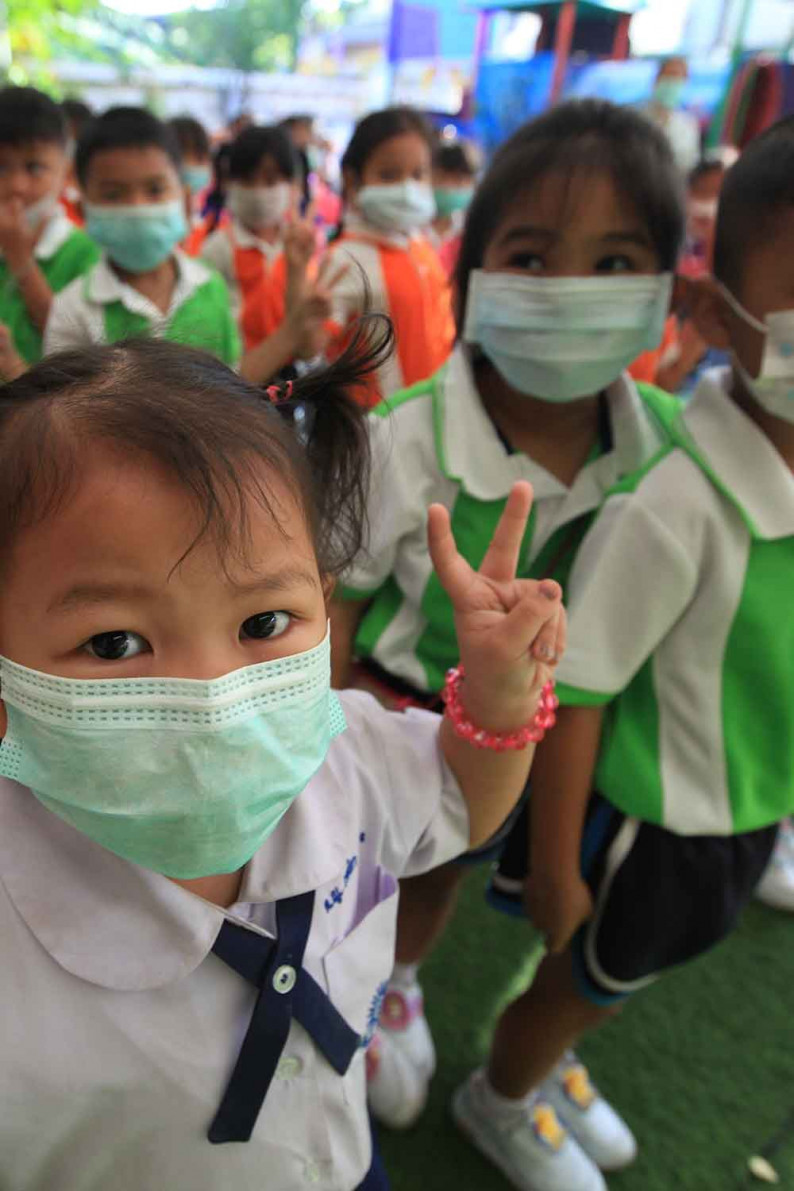The disastrous consequences of the Covid pandemic in India are a cause for concern not only for the subcontinent but for the entire world. The way the pandemic has wreaked havoc offers lessons for other countries. Noteworthy is that India's neighbours such as Nepal and Southeast Asian countries ranging from Laos to Myanmar and Thailand are reporting significant surges in infections.
The Indian experience can offer valuable lessons for Southeast Asia, and we need to pay heed to how not to end up in an irretrievable situation.
The first lesson is to avoid complacency. Talking to friends and experts in India earlier this year, there was a palpable sense of assurance and confidence that the country had managed the pandemic well since the reproduction value (R-value) had been under control for over 100 days, and the daily number of cases had fallen below 10,000 in a country with a population of 1.36 billion. This could be termed miraculous, and scientists worldwide were keen to learn more about this apparent success. However, it took only two months to witness a drastic reversal of events, leading to a situation where the Indian health system could no longer cope with the sheer volume of patients. Within this short period, the number of infections saw a 10-fold increase, and fatalities witnessed a 20-fold rise.
Many people within and outside India often consider it to be a holy country; so do people in Thailand, who also believe their land is uniquely blessed. But the virus is anything but holy. This feeling of self-assurance leads to a false sense of protection, giving rise to complacency. Thailand and the rest of Southeast Asia must be aware that nature helps those who help themselves.
The second lesson is to avoid public gatherings and mass events. Epidemiologists point to several super-spreading events in India. Electoral rallies often exceeded tens of thousands in four states (Assam, Kerala, Tamil Nadu and West Bengal) and one Union Territory (Puducherry). Famous pilgrimage festivals such as the Kumbh Mela saw massive participation. Southeast Asia would do well to limit events that can act as super-spreaders and ensure masking and adequate social distancing at smaller and restricted gatherings.
The emergence of the new variant -- B1.617 or the Double Mutant Indian Variant -- is named as the culprit. The jury is still out since Maharashtra, one of the states most severely hit by the pandemic, has seen only 15-20% of its Covid patients infected with this particular strain. Beginning March 21, in a short period of just 42 days, the number of infections in India increased more than 10 times, from 37,000 to over 388,000 a day. The R-value rose dramatically as well as the daily death toll increased to 3,000-4,000. In May, as caution set in, the R-value fell to 1.23, but it is estimated that infections will remain between 400,000-600,000 for several weeks till the R-value falls to below one. The question often posed is: Could this happen in Thailand and Southeast Asia? The answer is yes.
The third lesson arises from comparative analysis. Let us compare Thailand with India by using an equivalent population base. This shows that the increase in the number of cases in Thailand is very similar to India. What is reassuring is that the fatality rate is lower, primarily because Thailand's existing health system has managed to take care of its patients. But is it sufficient to manage and control a similar spurt? Here, the answer is no.
The solution is provided by Anthony Fauci, Chief Medical Adviser to the US President, who described vaccines as the "end-game" for controlling the pandemic in India. Dr Fauci also suggests that India follow China's example by creating temporary emergency hospitals and increasing the number of hospital beds.
Perhaps, these are the two most important lessons for Thailand and Southeast Asia. Given rising case numbers and to safeguard against another spike caused by super-spreader events, mutations, or other factors, we need to prepare emergency hospital beds for 10 times the number of existing patients. An emergency plan must be readied and rehearsed. Along with hospital beds, the availability of medication and the supply of medical oxygen must be ensured.
India is the largest vaccine producer globally, and it has vaccinated the third-largest number of people (behind China and the United States). Yet this only amounts to inoculating 2.4% of its population. It is estimated that at the current rate of 190,000 inoculations per day, it will take 2.8 years for India to return to normal. Meanwhile, Thailand has so far inoculated only 1% of its population, which is less than India in percentage terms. This is simply not enough.
We are still in the first phase of pandemic management. Until we achieve an initial target of 50% vaccination, the Hammer and Dance strategy (strong measures followed by relaxed phases) can work as an interim measure to suppress the rise and stabilise the R-value below one. The second phase will begin once countries have vaccinated half of their residents. This is the time when Thailand and other countries can consider opening businesses and sites to those foreigners who are already vaccinated. The third phase begins when vaccinations reach two-thirds to 75% of the population, and this is when we can consider a return to normality. The biggest challenge is how fast we reach to the coveted third phase. If we continue with vaccination at the same pace, it will take Thailand 7.7 years to reach that point. We need to accelerate the process and achieve this goal before the end of 2021!
Prof Worsak Kanok-Nukulchai, a Fellow of the Academy of Science, Royal Society of Thailand, is Executive Director of the Chulalongkorn School of Integrated Innovation.
